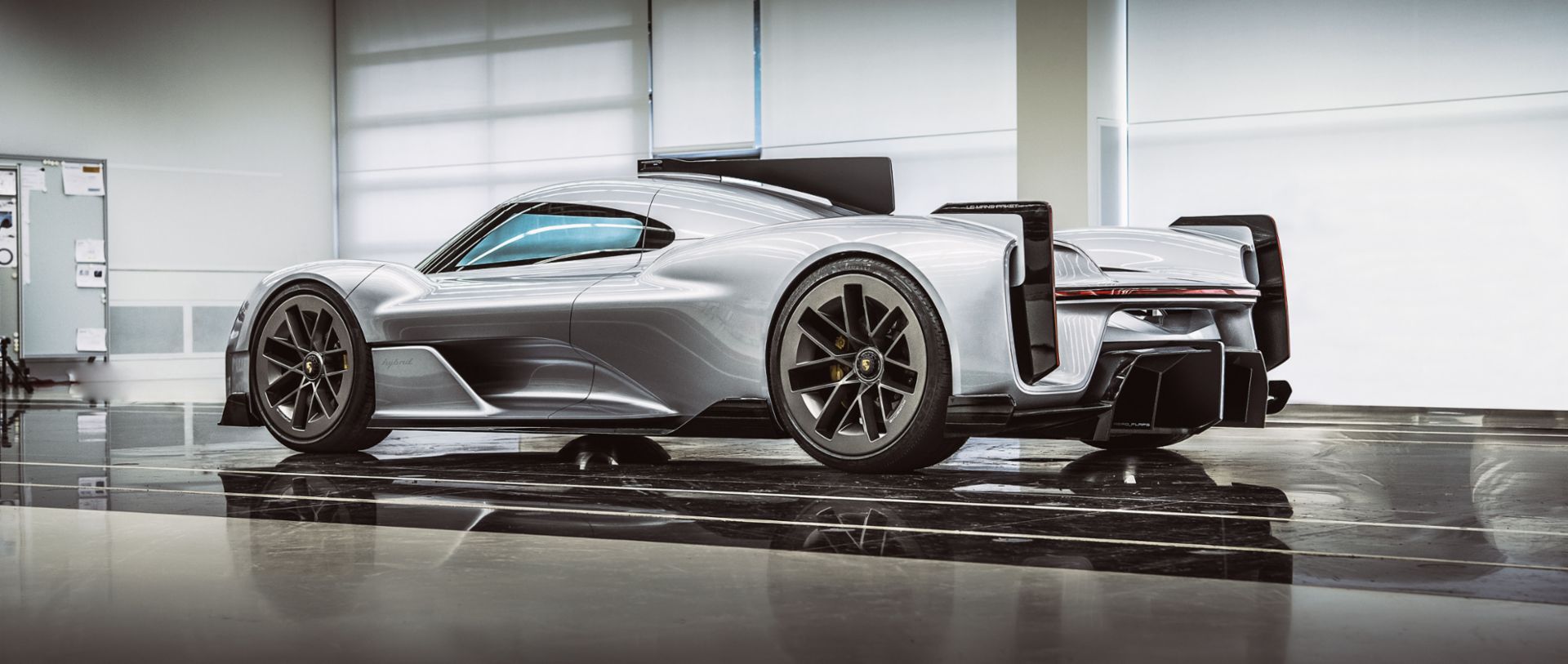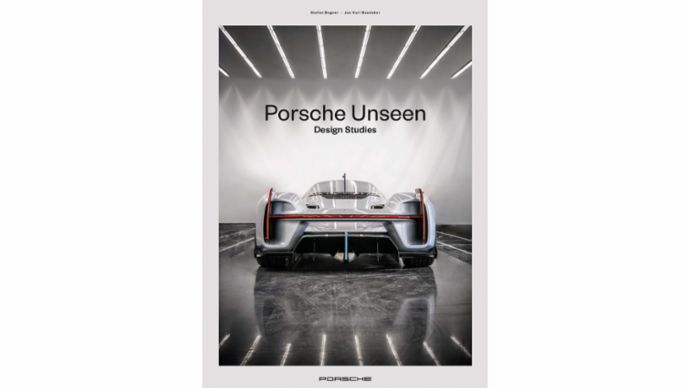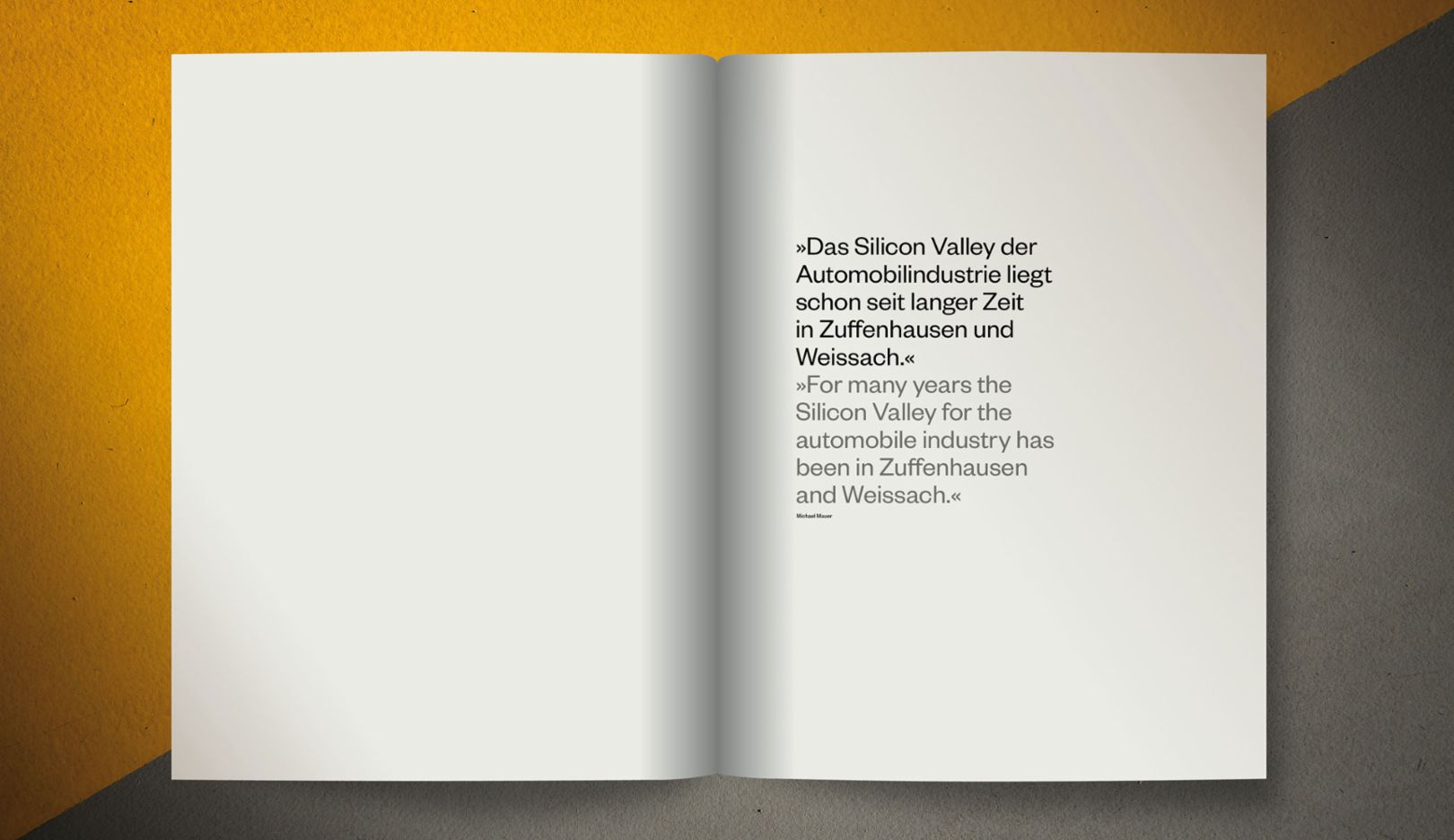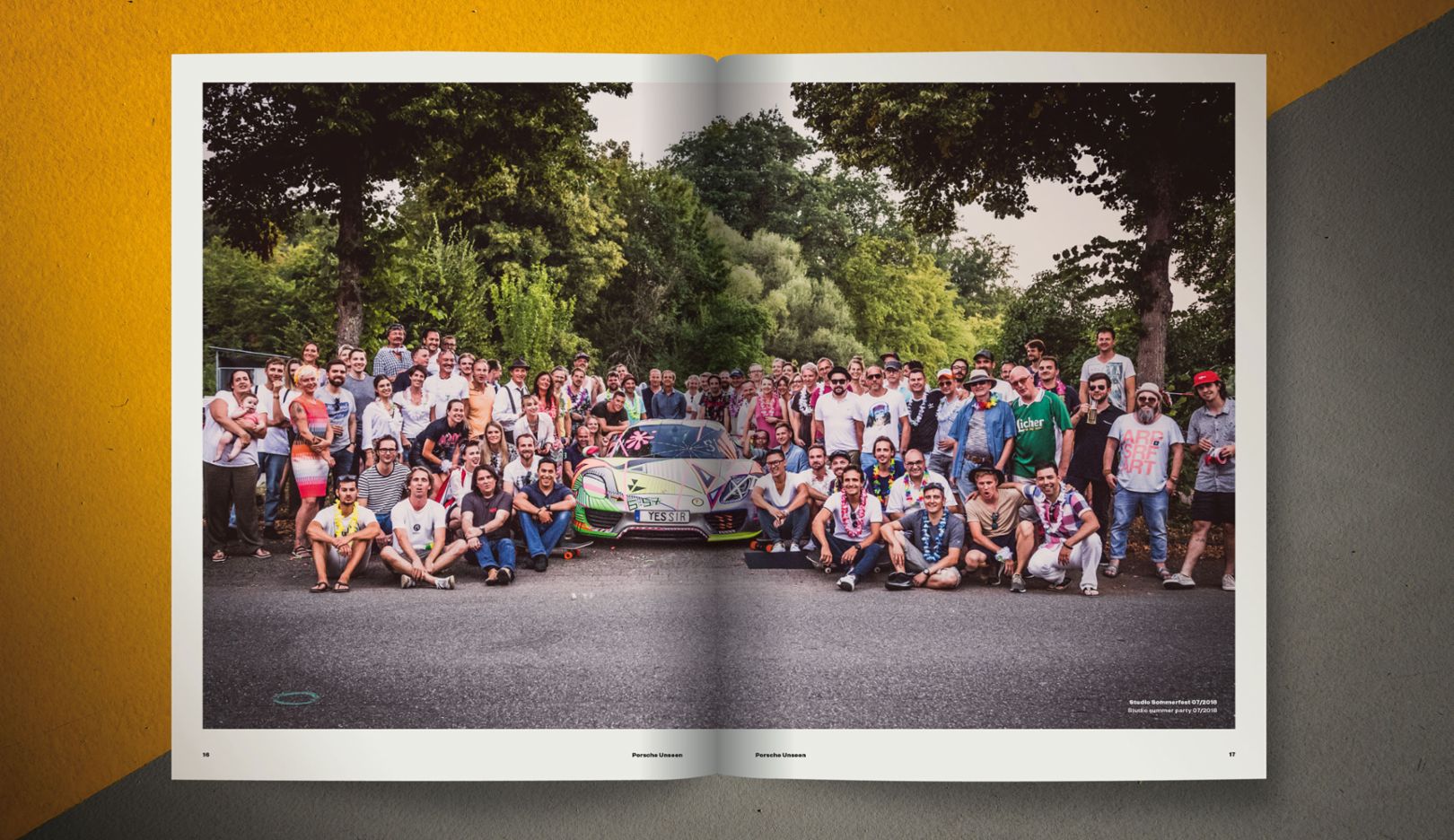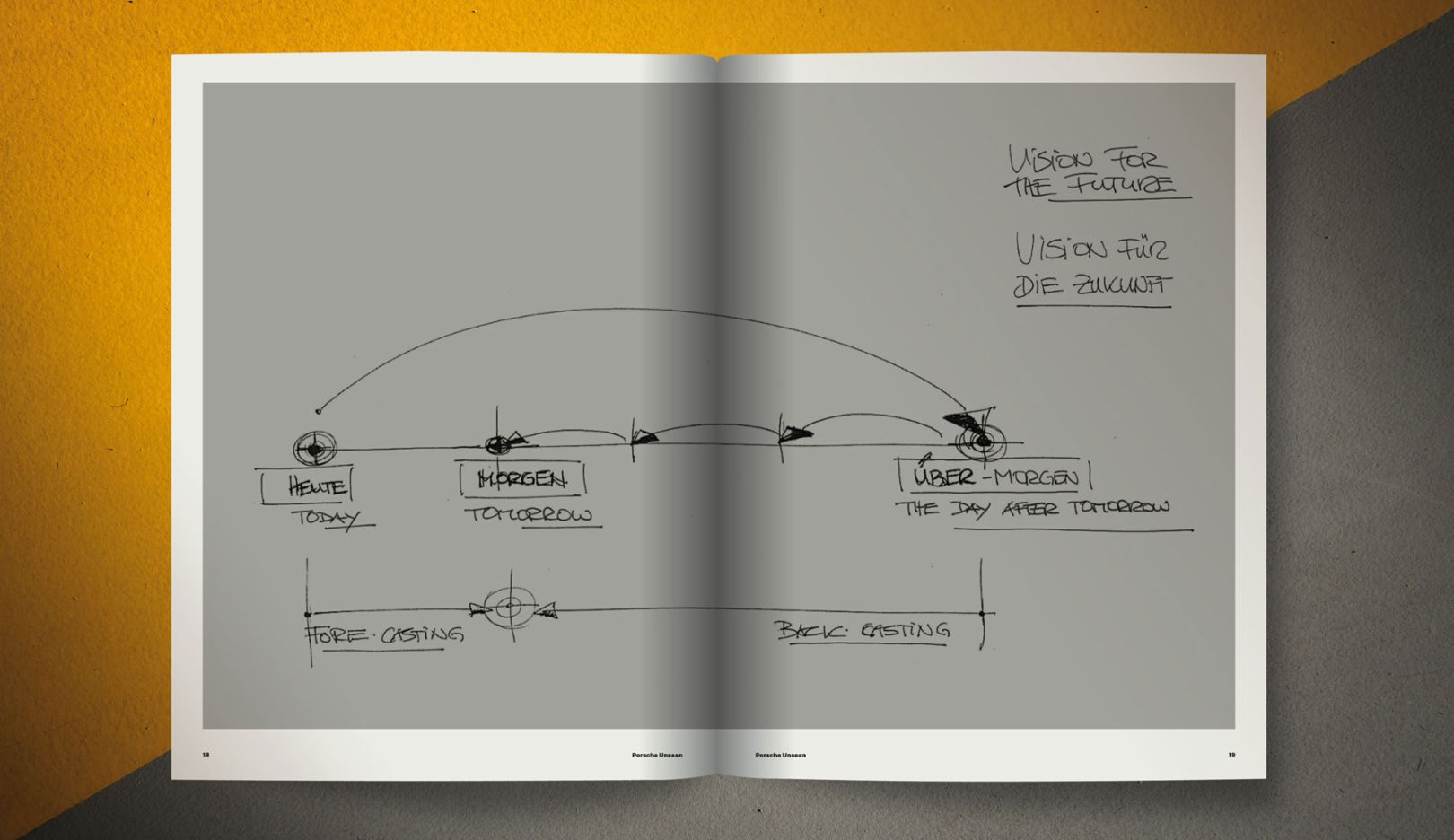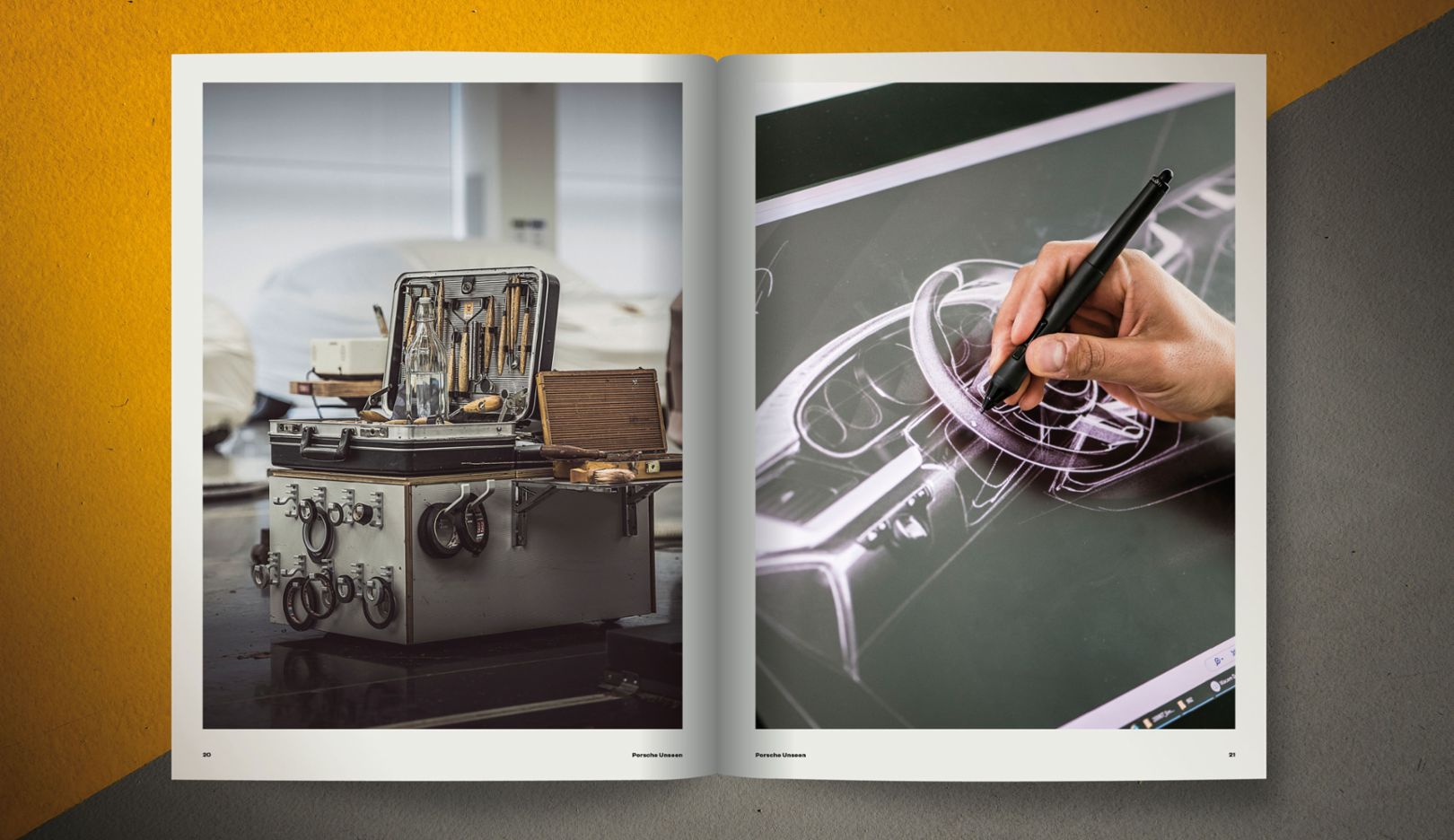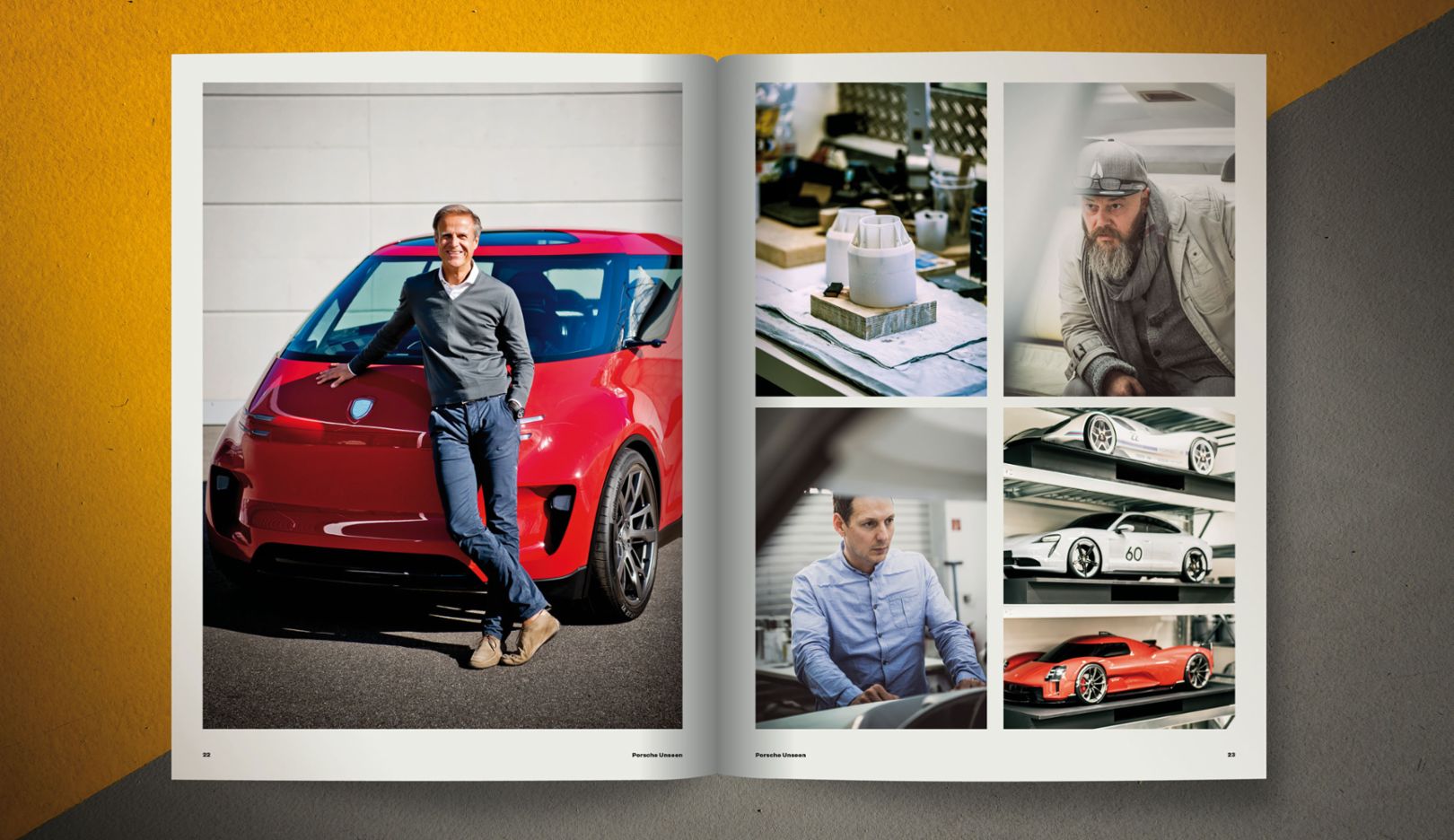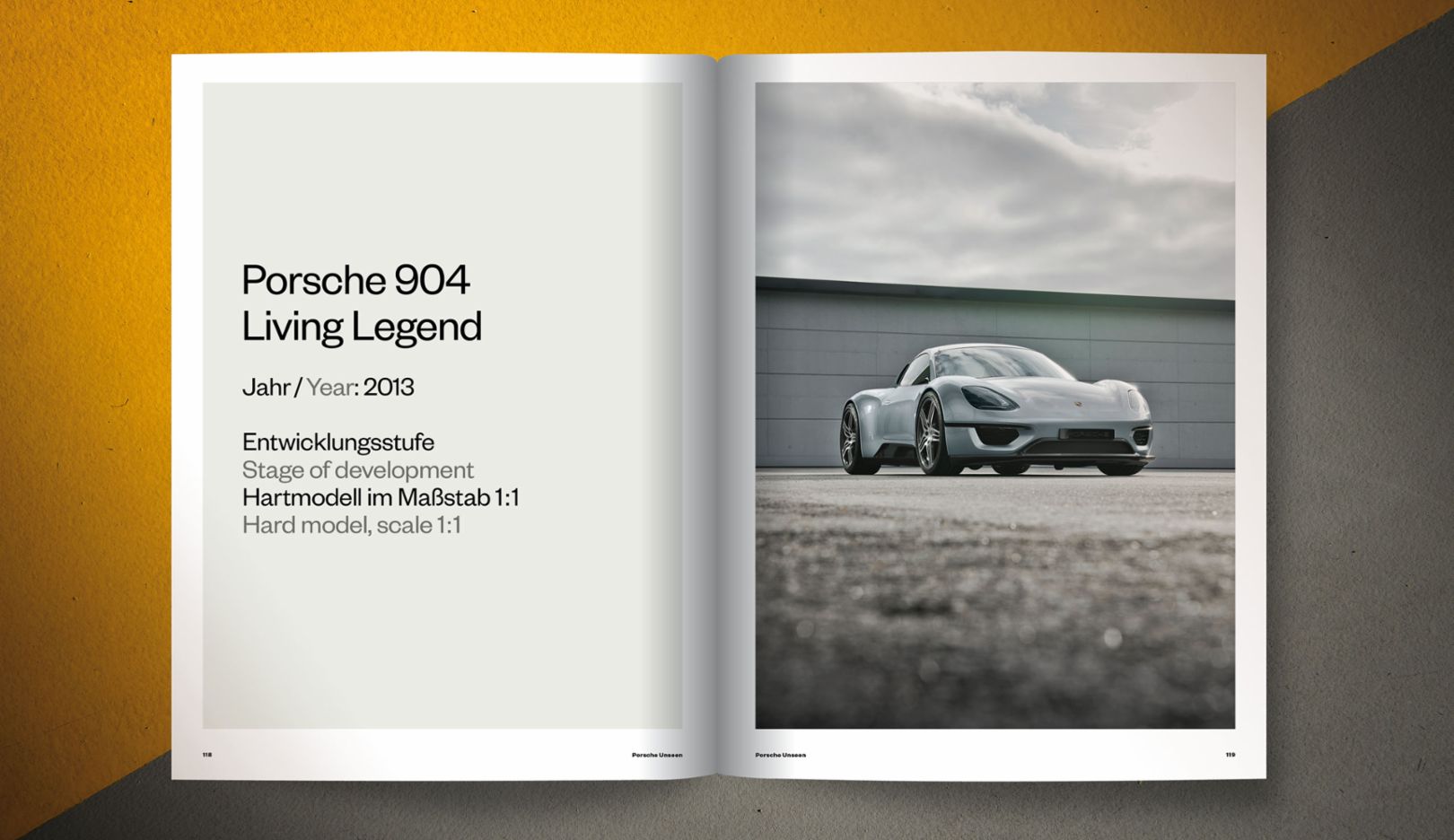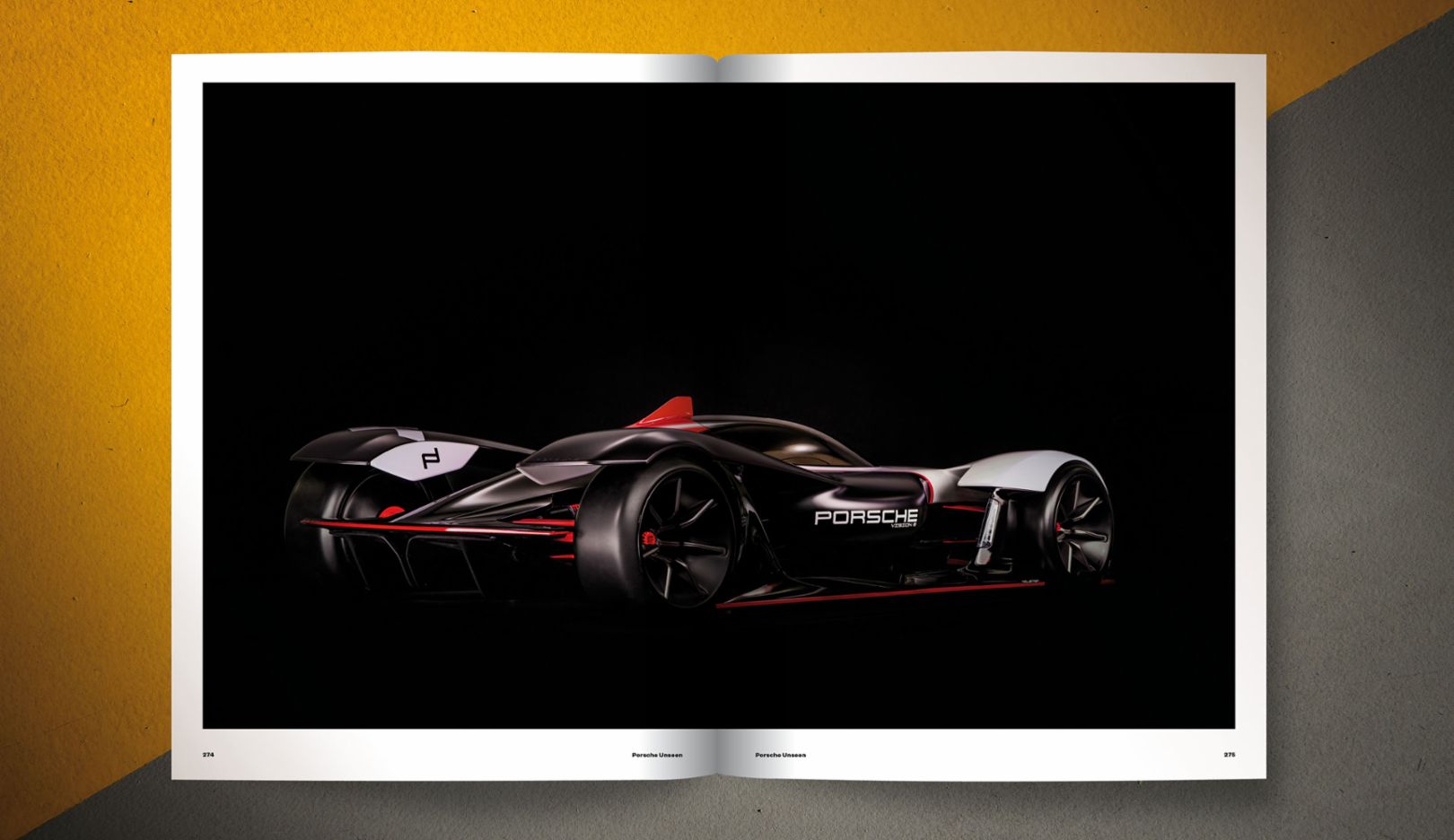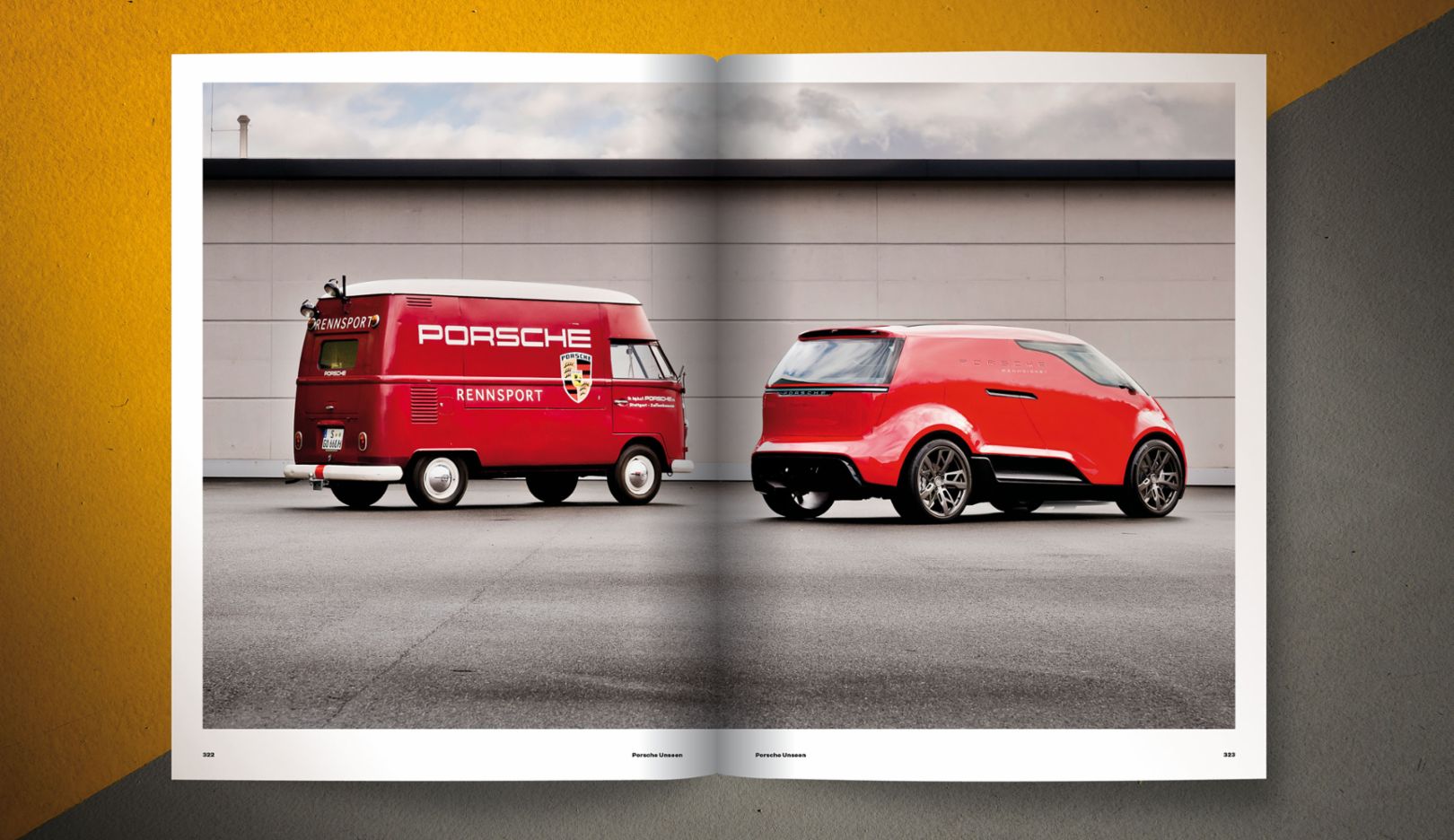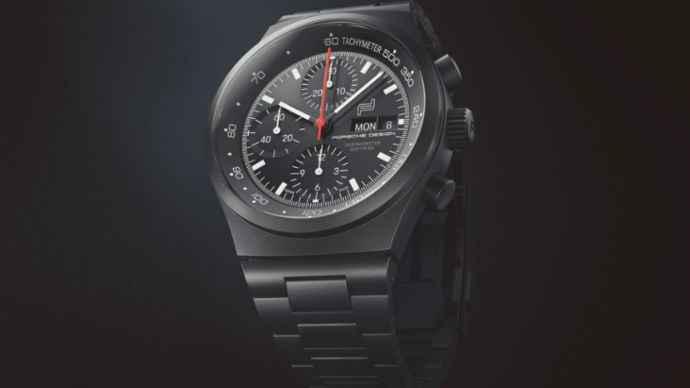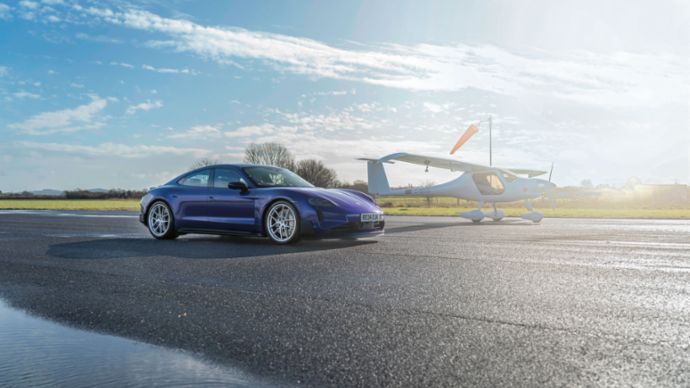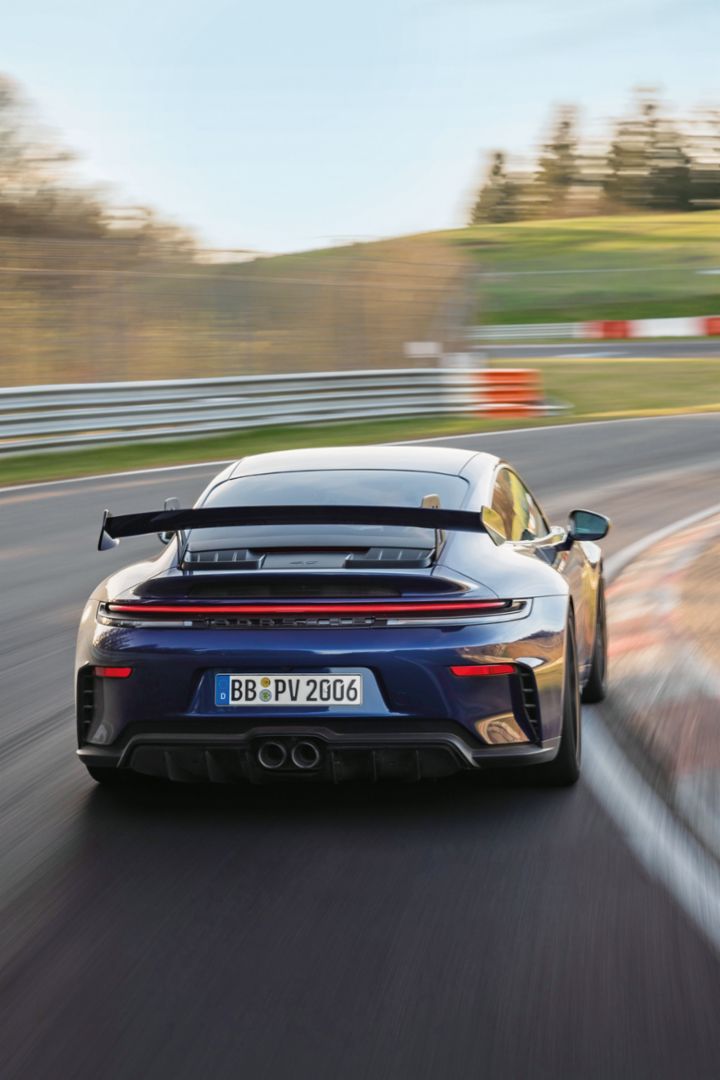Dream Cars
Unseen: Twelve visions from Porsche’s Development Center in Weissach. A fascinating flexing of the creative muscles in the process of designing the future.
“Once I’ve been in the future in my thoughts, it changes my view of the present as well.” Michael Mauer on the importance of concept cars
The Porsche design studios in Weissach are the breeding grounds for the sports cars of tomorrow. But Michael Mauer and his team are not just fine-tuning the lines of current and future models. The chief designer also heads up an experimental development team for visionary concept studies—a dynamic time-travel project with complete creative freedom. The mission of the designers is to look forward ten, twenty, or thirty years into the future and return from there with new ideas. This triggers discussions, calls thought patterns into question, and makes innovations possible. “The point of these visions is not to bring each one of them to the road. Rather, the idea is to open up spaces of possibility and establish a relationship with the future,” says Mauer. “Once I’ve been in the future in my thoughts, it changes my view of the present as well.”
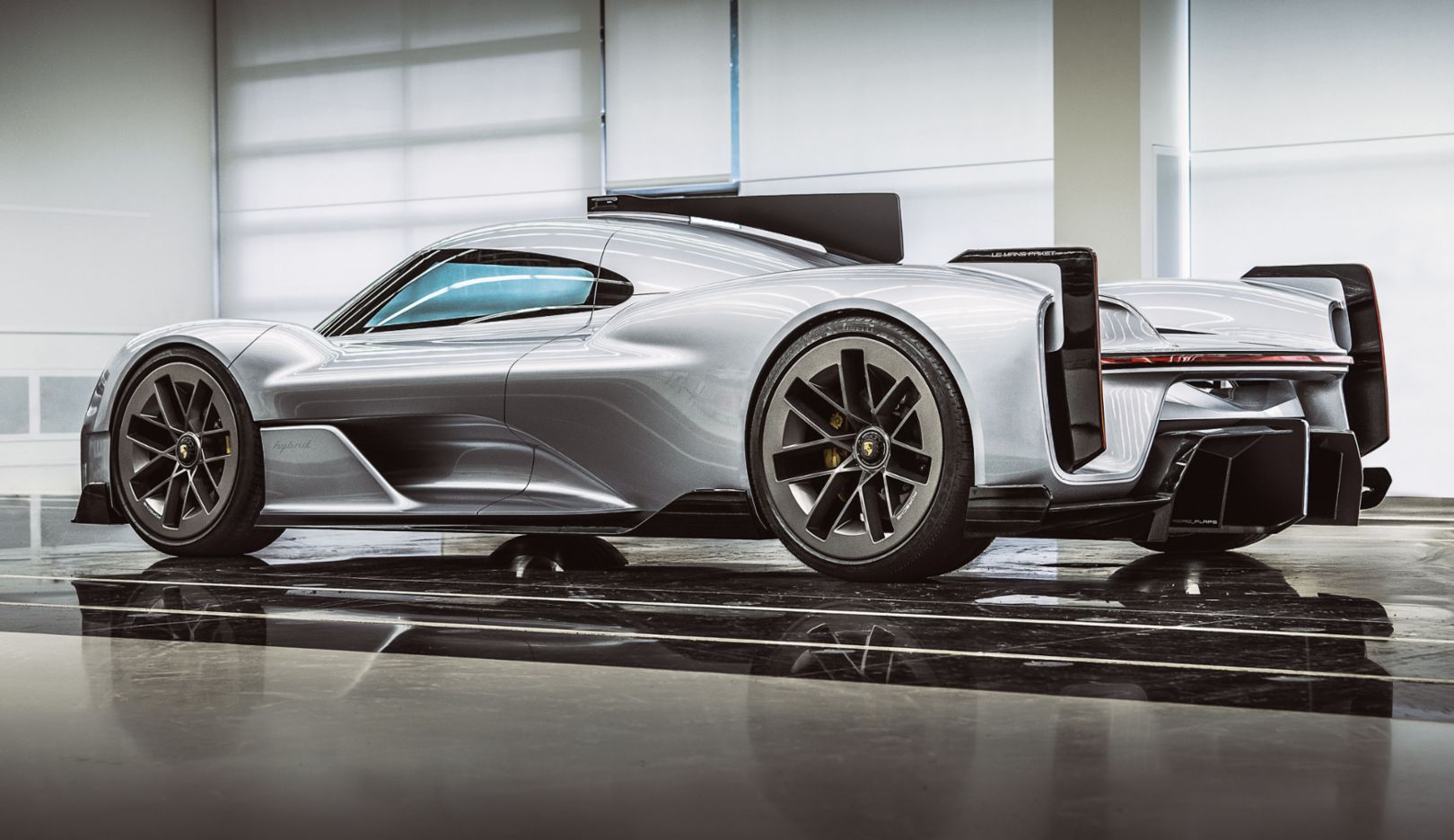
PORSCHE 919 STREET
YEAR: 2017
STATUS: 1:1 scale clay model
UNDERLYING IDEA: With the Porsche 919 Hybrid, Porsche won the 24 Hours of Le Mans three times. Based on the LMP1 race car, chief designer Michael Mauer and his team developed this vision of a special series for private racers.
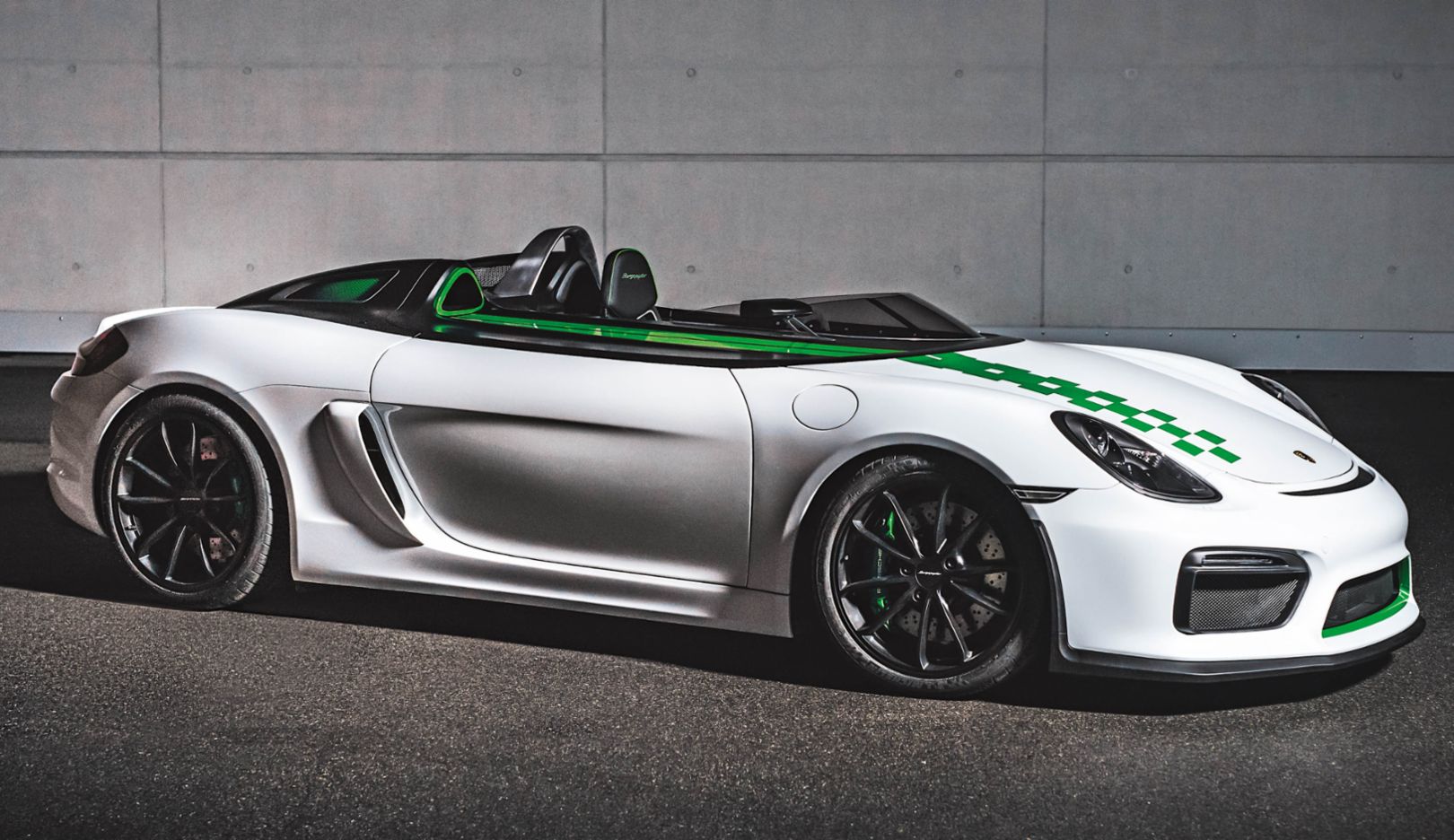
Porsche Boxster Bergspyder
YEAR: 2014
STATUS: Drivable prototype
UNDERLYING IDEA: Weighing in at just 384 kilograms, the Porsche 909 Bergspyder was the lightest race car ever used by Porsche in motorsports. In the Porsche Boxster Bergspyder, Michael Mauer and his design team have given a reverent nod to the legendary switchback sprinter. At the same time, they have shown that the 981 Boxster series, with its low weight and powerful mid-engine, is also equal to conquering the corners of the Alps.
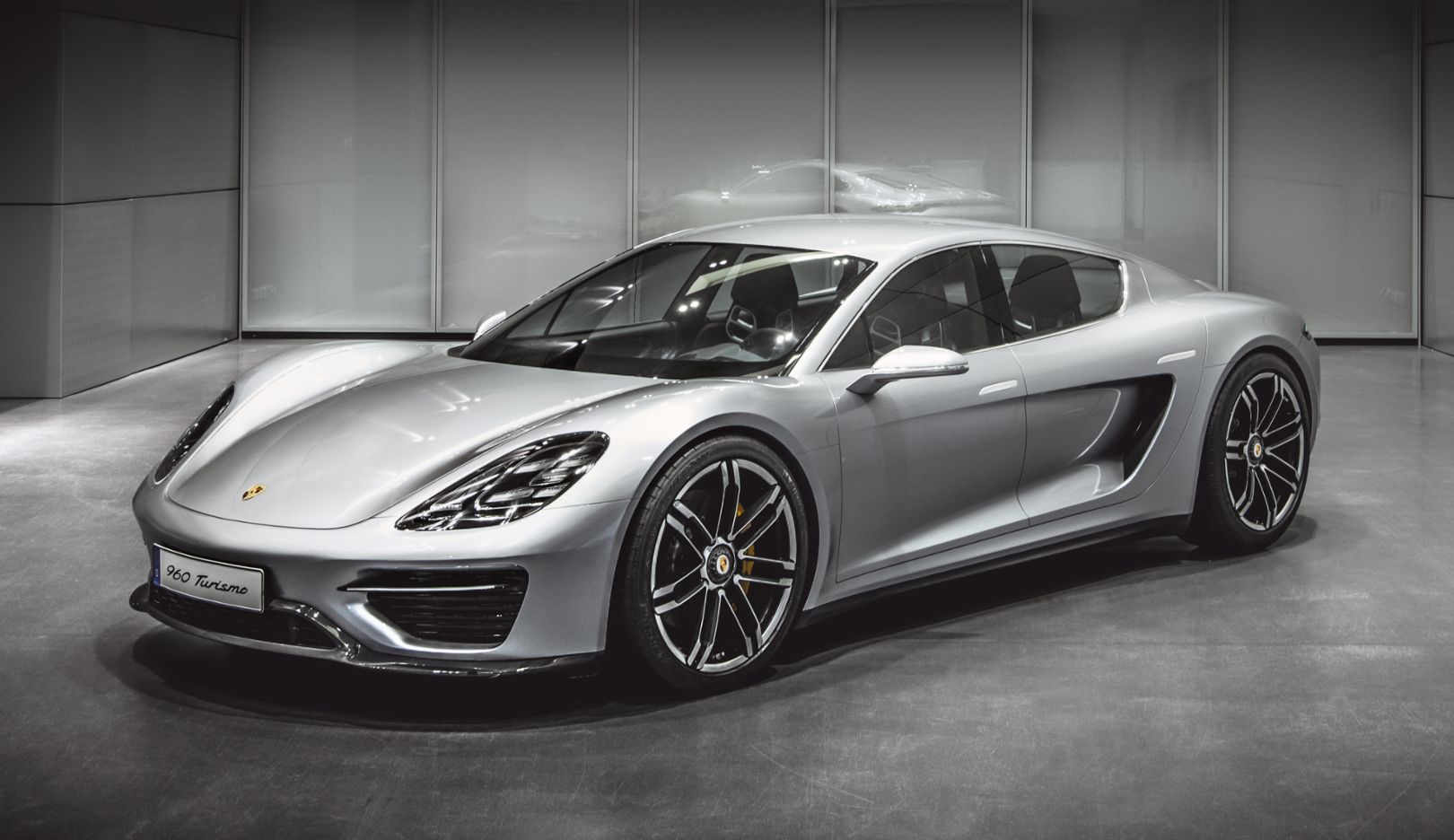
Porsche Turismo Vision
YEAR: 2016
STATUS: 1:1 scale hard model
UNDERLYING IDEA: The shiny silver prototype was initially developed as an experimental study of a super sports car with four doors and a rear engine. “But then we realized that the idea could be implemented even better with an all-electric drive unit,” Mauer recalls. The Porsche Turismo Vision ultimately served as the blueprint for the development of the Porsche Taycan.
“The idea is to open up spaces of possibility.”
Now Porsche has opened the gates to the secret archives of the design studios. Bold, fascinating, and surprising concept cars have been created over the nearly two decades under Mauer’s direction. The breadth of design projects worked on in this workshop of dreams is truly unparalleled. The ideas span the full range between evolution and revolution. The illustrious history of the brand often serves as a source of inspiration. Take the design of a modern Porsche 911 Safari Vision or the reinterpretation of the Porsche 904. The racing technology for many of the dramatic hypercars is practically on the designers' doorstep: at the Porsche Motorsport Center. An integral part of the development center in Weissach—and for good reason. A Le Mans race car for the road becomes every bit as conceivable as a Formula E machine for customer racing. Sometimes it is a series of interconnected inspirations that bring forth astonishing results. The blueprint for the all-electric Porsche Taycan, for instance, emerged from the study of a super sports car with four doors and a rear engine.
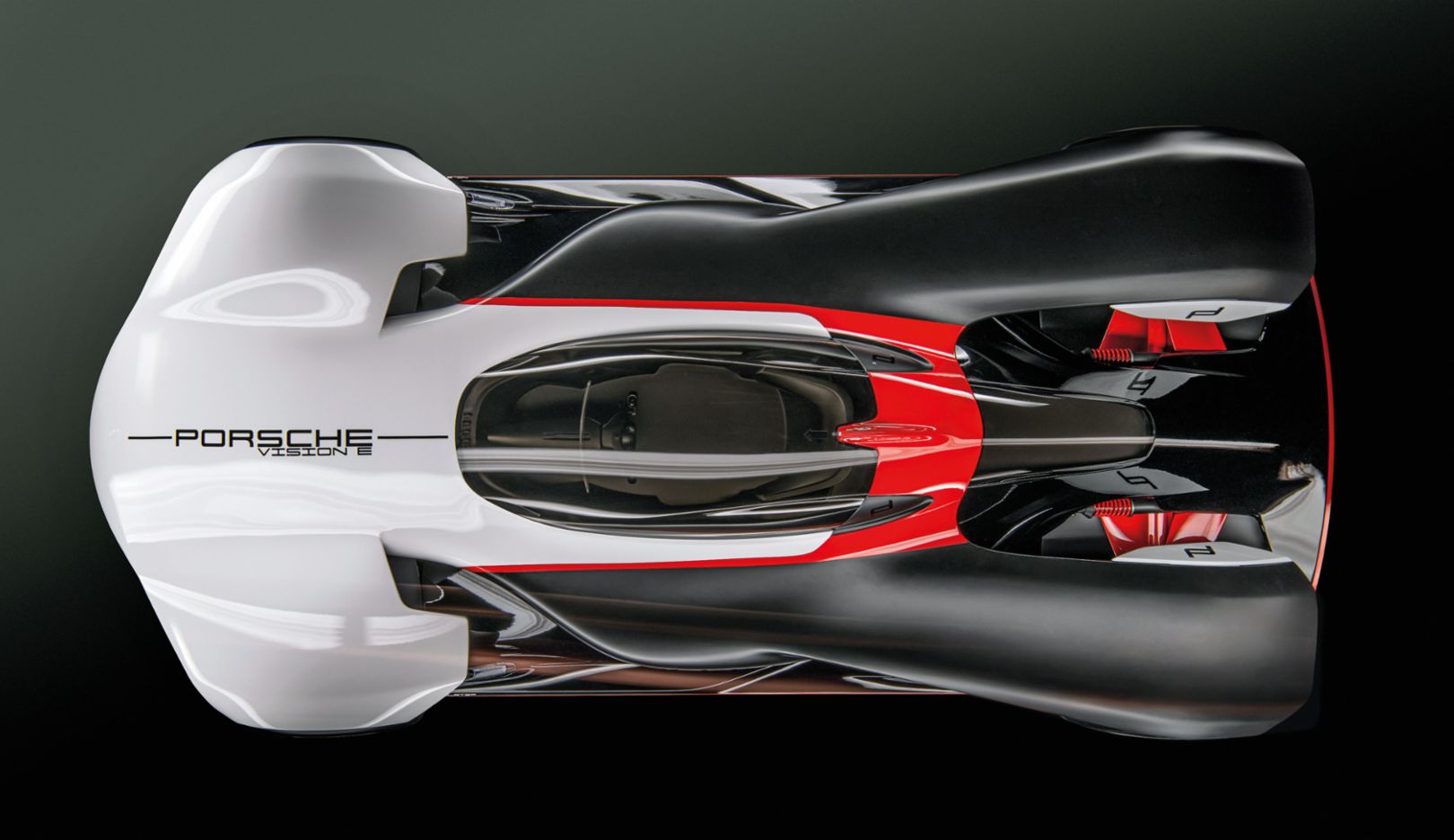
Porsche E Vision
YEAR: 2019
STATUS: 1:1 scale hard model
UNDERLYING IDEA: In Formula E, the technology of the future is tested under high-performance conditions and pushed to its limits. Based on the Porsche 99X Electric, the design team developed a radically light, single-seater race car for private racers. The all-electric driving experience should be breathtaking.

Porsche Spyder Vision
YEAR: 2019
STATUS: 1:1 scale hard model
UNDERLYING IDEA: Purist, flat, and frighteningly fast: James Dean’s Little Bastard and the Carrera Panamericana race cars of the 1950s served as models for the new interpretation of the Porsche 550 Spyder. The concept car was also used to further develop the design identity for Porsche sports cars with combustion engines.
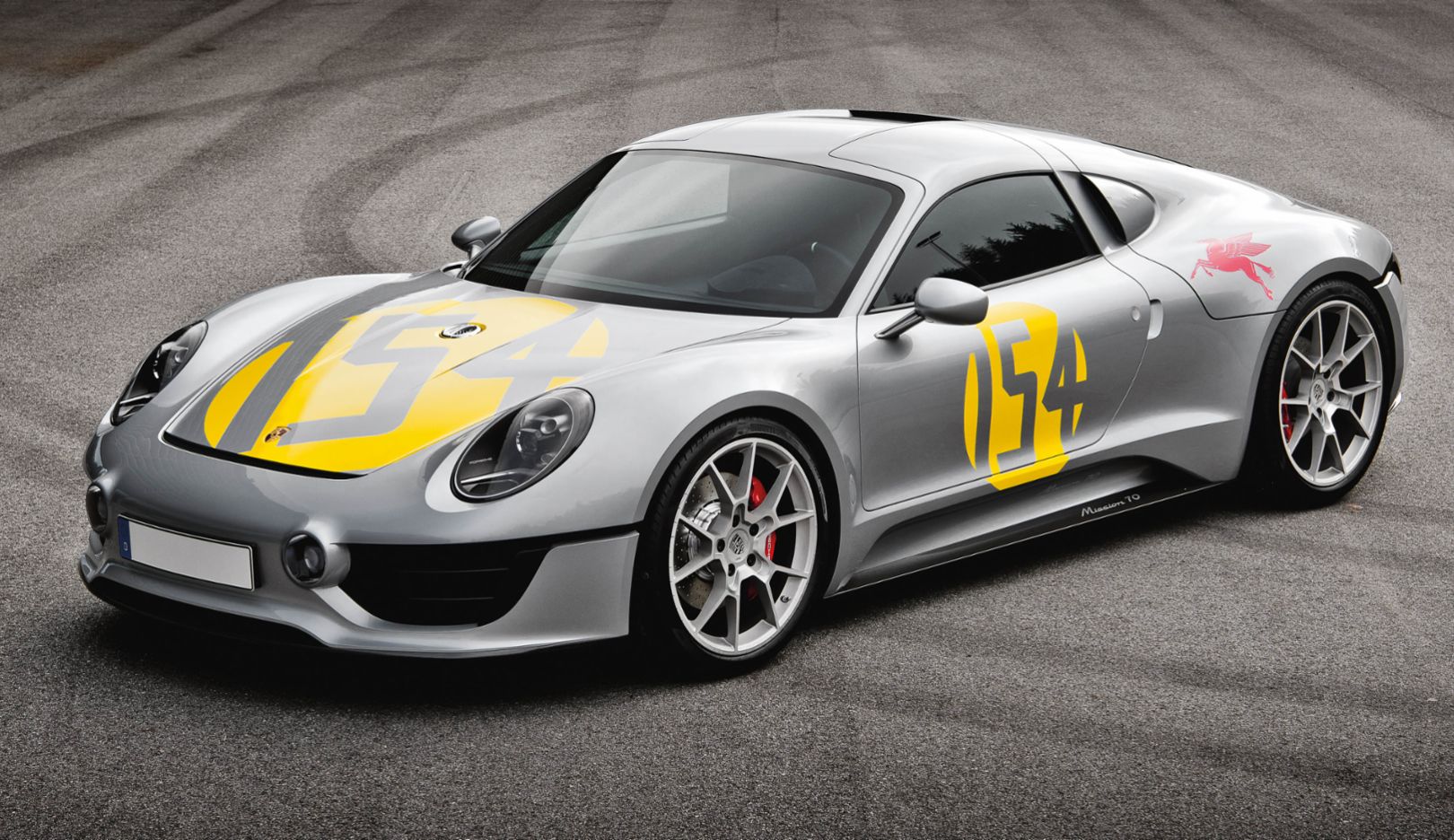
Porsche Le Mans Living Legend
YEAR: 2016
STATUS: 1:1 scale hard model
UNDERLYING IDEA: This extreme street sports car based on the Porsche Boxster is reminiscent of the groundbreaking Porsche 550 Coupé that competed in the 1953 running of the 24 Hours of Le Mans. The front and rear hoods open in opposite directions, and the car is fueled via a central nozzle in the front. In the rear there is an eight-cylinder engine that produces a thrilling sound.
When the designers leave all the conventions of the sports-car manufacturer behind on their journey, they experiment with entirely new automotive forms. Is a car for up to six people compatible with the brand values? What might a space van from Porsche look like? The corresponding study, the Porsche Racing Service Vision, is one of many examples of the free spirit that characterizes the design studios.
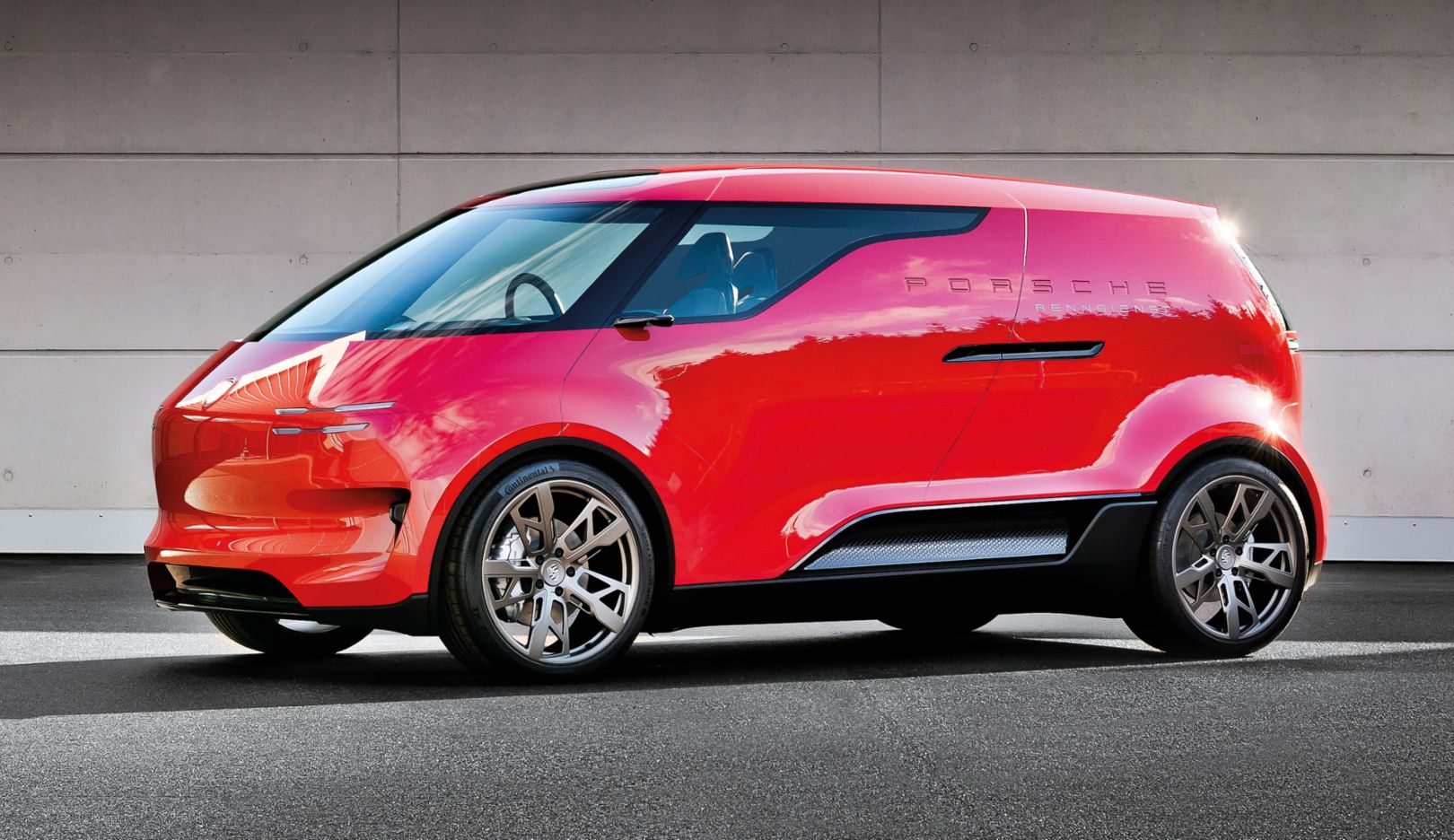
Porsche Racing Service Vision
YEAR: 2018
STATUS: 1:1 scale hard model
UNDERLYING IDEA: What might a Porsche for up to six people look like in which the spatial experience is the main focus? The design team answered this question with an unusual concept car—the Porsche Racing Service Vision. The body of the car is cast in one piece and dispenses with all conventions. In the cockpit, the driver occupies a single seat, which takes up little space in autonomous driving mode. In the rear, passengers enjoy the comfort of a spacious lounge.

Porsche 911 Safari Vision
YEAR: 2012
STATUS: Drivable prototype
UNDERLYING IDEA: “We believe that no other car brand can combine the themes of sports cars and off-road as credibly as Porsche,” says Mauer. The Porsche 911 Safari Vision was created in 2012 on the basis of the 991 generation of the 911. With its raised ride height, reinforced wheel arches, massive bumpers, and spartan cockpit, the study is reminiscent of the legendary 911 Safari. The rally cars were used in the East African Safari Rally in the 1970s.
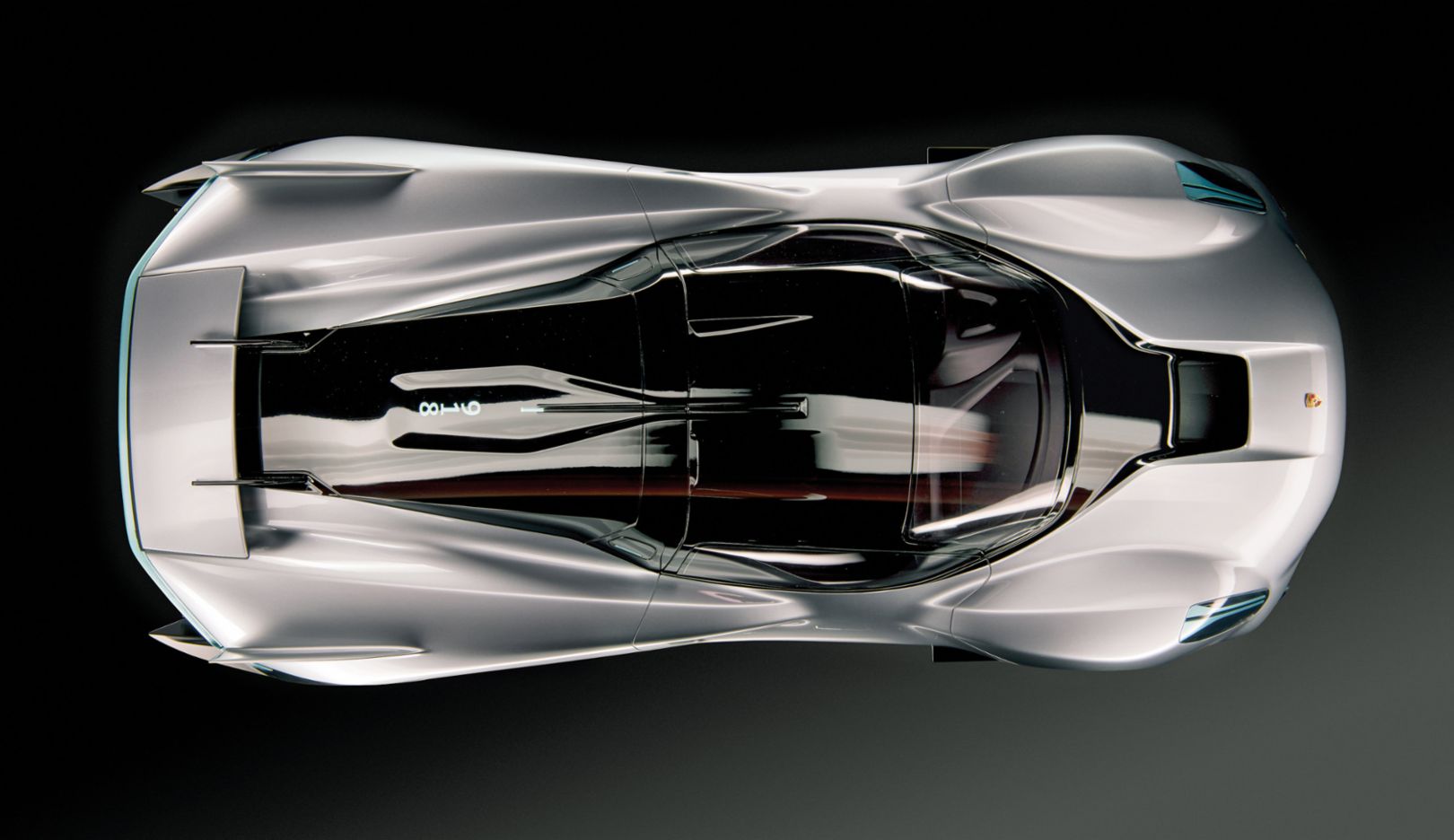
Porsche 918 RS Vision
YEAR: 2019
STATUS: 1:1 scale hard model
UNDERLYING IDEA: The Porsche 918 Spyder was a milestone as the first hybridized super sports car out of Weissach. In 2019, the designers created a fascinating new evolutionary stage of the 918. With an enhanced drive and chassis technology and an aerodynamically perfected body, the Porsche 918 RS Vision would once again set standards on the road and racetrack.
The proposals flex the creative muscles used in the process of designing the future. Michael Mauer explains it like this: “The challenge is to flesh out a vision step by step and then move backwards through time and make the connection to the present.”
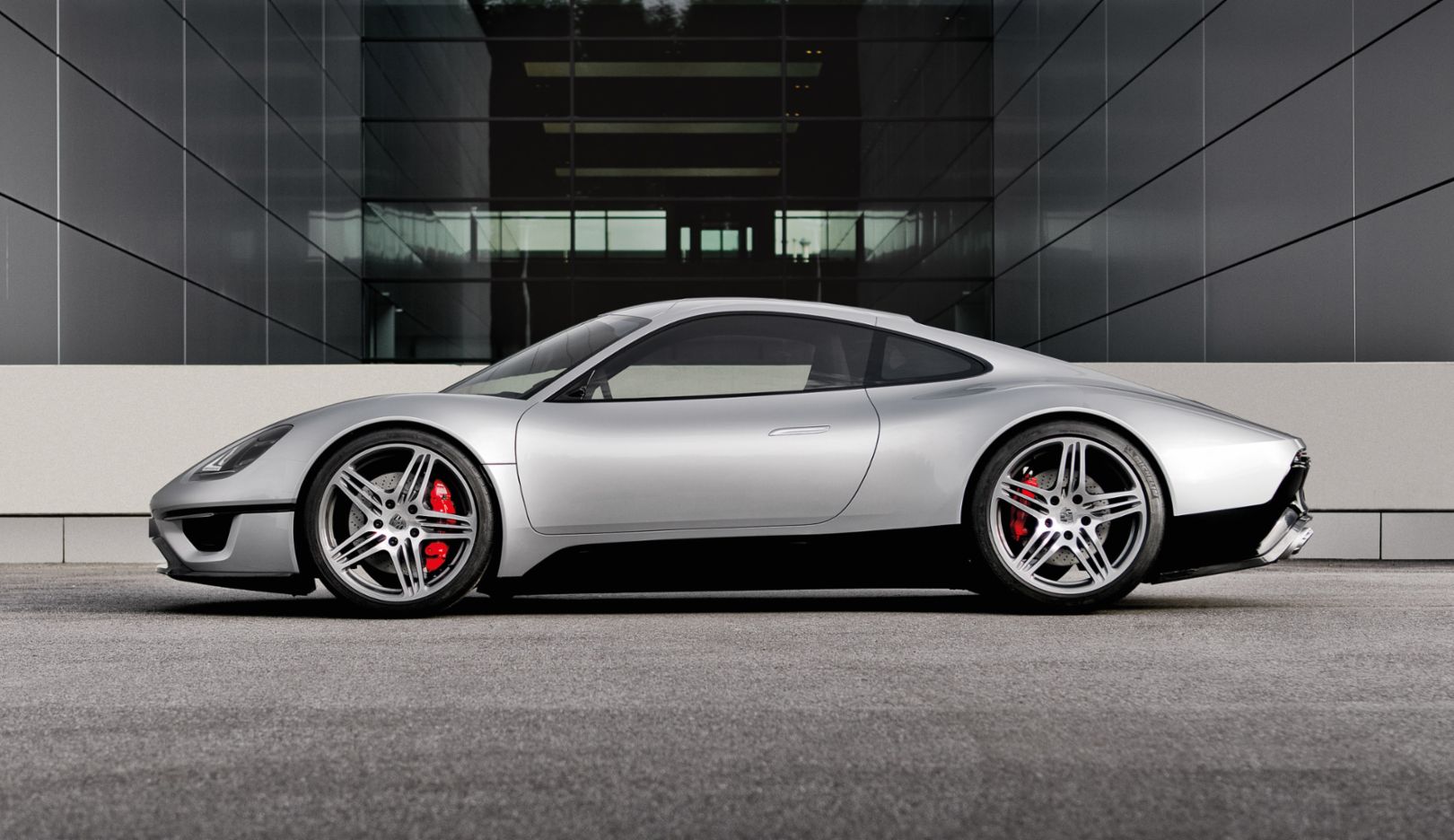
Porsche 904 Living Legend
YEAR: 2013
STATUS: 1:1 scale hard model
UNDERLYING IDEA: This study of a particularly compact and puristic lightweight sports car is reminiscent of the legendary Porsche 904 of 1963. Under the hood is a carbon monocoque chassis, which was also used in the VW XL. Weighing just 900 kilograms, the Porsche 904 Living Legend could potentially have been powered by a high-revving motorcycle engine.

Porsche Macan Safari Vision
YEAR: 2013
STATUS: 1:1 scale hard model
UNDERLYING IDEA: The Porsche Macan is a true off-road wonder—and practically predestined for demonstrating its versatility on gravel roads and rally tracks. That's why the design team in Weissach placed the Porsche Macan Safari Vision on all-terrain wheels as a three-door vehicle suitable for off-road use.
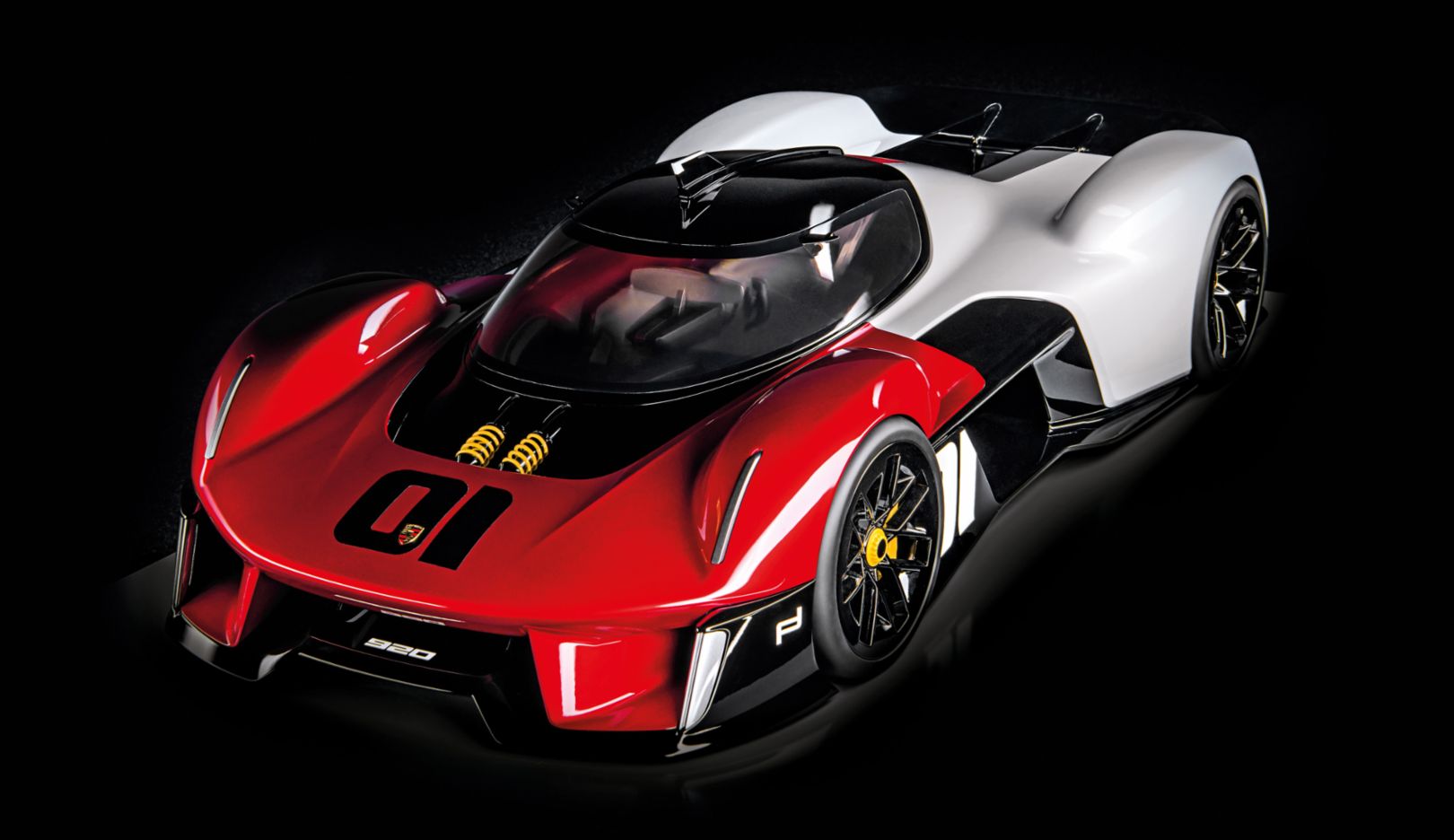
Porsche 920 Vision
YEAR: 2019
STATUS: 1:1 scale hard model
UNDERLYING IDEA: How can the aesthetic language of Porsche's road-going sports cars be incorporated with the functionalist design of a race-car prototype? With their Porsche 920 Vision, the design team has created an extreme hypercar. The aerodynamically optimized body and the central cockpit blur the boundaries between racetrack and road.
Some visions remain sketches on paper or in virtual space. Others are pursued further, being created as scale models or near-series prototypes. As products of previously unthought thoughts, they offer inspiration and orientation. They change the way one looks at things and thus shape the world of tomorrow.
Consumption data
911 GT3
Taycan Turbo GT
-
21.2 – 20.5 kWh/100 km
-
0 g/km
-
A Class
